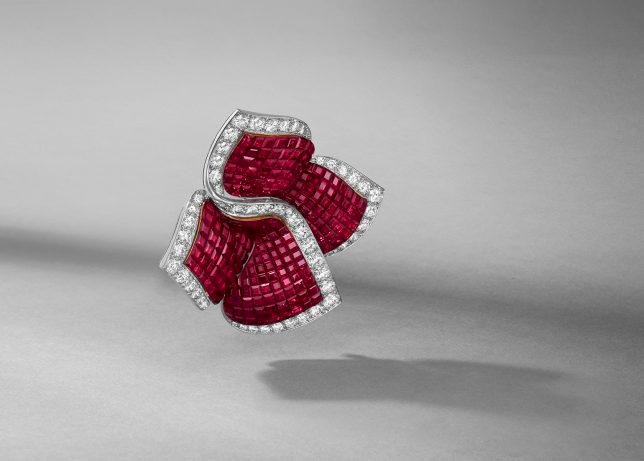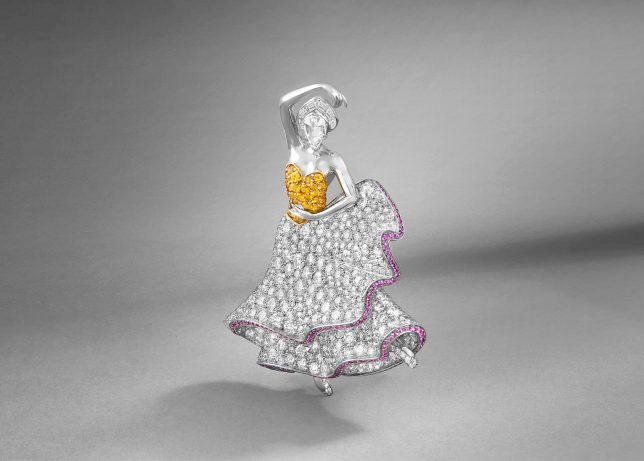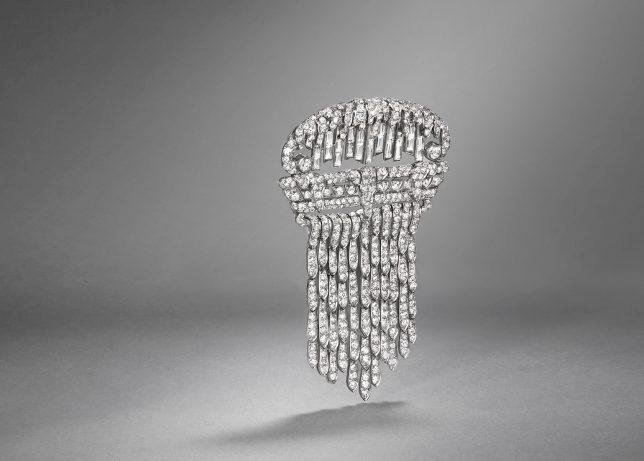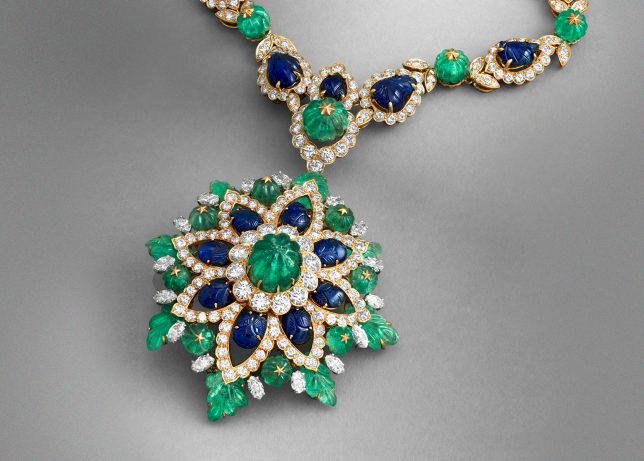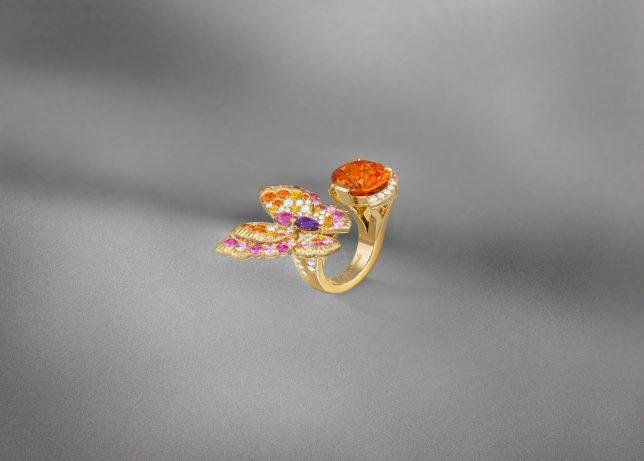Van Cleef & Arpels presents six creations at the TEFAF 2023 art and antiques fair
For the past 10 years, Van Cleef & Arpels has participated in the TEFAF art and antiques fair, that takes place in Maastricht. An event that brings together masterpieces of various artistic disciplines: from ancient works of art to paintings by great masters, up to the creations of High Jewellery. From 11 to 19 March, the Maison will exhibit six creations from its Héritage collection, as well as collections of contemporary creations.
The Héritage collection includes nearly 200 jewelery and High Jewelery creations, as well as precious objects created by Van Cleef & Arpels between the 1920s and 1990s, available for sale.
On display for the first time ever at TEFAF 2023, the striking 1971 Necklace highlights a typical 1970s aesthetic. The period is characterized by a general attraction towards Asia, and in those years Claude Arpels traveled around the continent, animated by curiosity and the search for exceptional precious stones. This extraordinarily flowing necklace, that descends to the middle of the chest, is distinguished by its beautiful sapphires and emeralds. The pendant, adorned with a generous engraved emerald, can be detached and worn as a brooch.
The second Héritage creation on display is the Pampilles brooch, created in 1929. This brooch expresses the predominant style of the time, Art Deco, while also highlighting historical influences. Named after its drop-shaped "cascade" of diamonds, the rain of diamonds sparkles on a mobile and unobtrusive platinum setting that sparkles with every movement of the body. The fringes of round diamonds, of various lengths, create a very realistic "waterfall" effect. This term is also used to refer to gemstones arranged in order of size. A frequent element in the jewelery of the 1910s, in the Roaring Twenties the fountain motif became a predominant means of expression of the pure geometric lines and stylized forms of the Art Deco movement.
The third creation is the Écarlate brooch, dating from 1997. The brooch reflects the tradition of Serti Mystérieux creations from the 1930s, whose examples were inspired by the fashion repertoire. It represents a precious handkerchief, with an extremely light and soft texture. Thanks to the Serti Mystérieux Traditionnel with rubies, it almost seems as if you can touch the folds of the fabric and perceive the characteristic rustle.
Through the selection of contemporary High Jewellery, Van Cleef & Arpels invites visitors to explore new ways of wearing jewellery. These creations reflect a selection of the Maison's iconic sources of inspiration such as nature and dance, highlighting its ability to create astonishing combinations of precious stones to the max.
The butterfly, emblem of the metamorphosis of nature, has been a fundamental symbol of Van Cleef & Arpels since 1906. This Entre les Doigts Papillon Aglais ring exudes warm tones, generated by engraved yellow gold and a refined nuance of colored sapphires. Alongside the insect, a generous 9.79-carat oval spessartite garnet shines in all its beauty, and its orange glow is reminiscent of a spectacular summer sunset.
Aesthetic icon of Van Cleef & Arpels since the Roaring Twenties, in the Seventies the transformable long necklace Médaillon Abstrait boldly mixes colors and materials. The necklace is formed by jeweler motifs and spheres, skilfully alternating in a silk thread, and punctuated with discreet knots, as well as details of amethyst and onyx spheres. The ingenious closure systems allow you to transform it completely: the length is variable, with or without the pendant. Five different configurations allow you to adapt this creation to any situation or trend.
The latest example in this selection embodies the Maison's passion for dance. The first Ballerine brooches appeared in 1941 and since then they have always given a note of grace and lightness to the creative tradition of Van Cleef & Arpels. This brooch is inspired by the most romantic ballet, La Sylphide (1832). The vaporous effect and extraordinary volume of the ballerina costume are recreated here by superimposing surfaces encrusted with diamonds. At the same time, the swirling movements and folds of the tutu emerge on the border of pink sapphires, that seems to come alive thanks to the position of the dancer's upper body.
